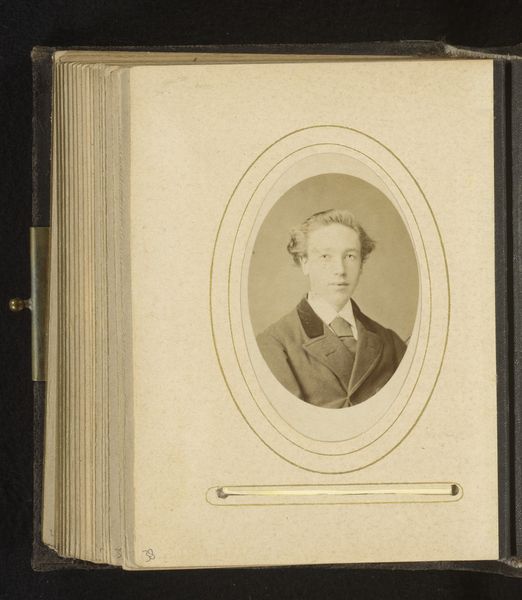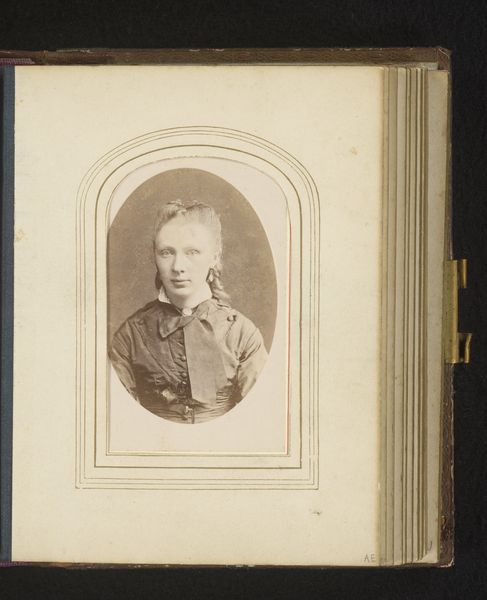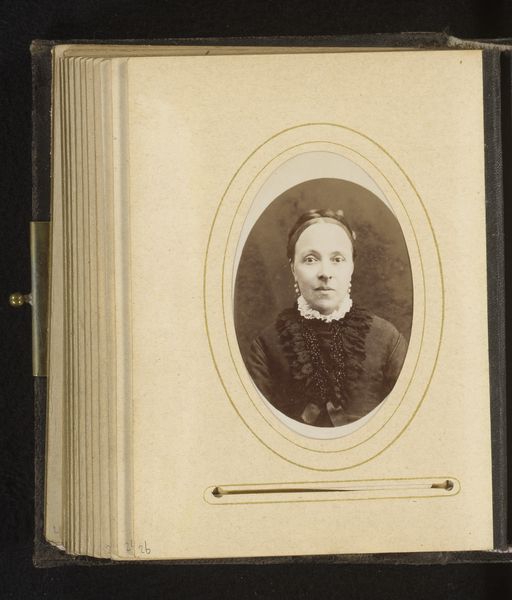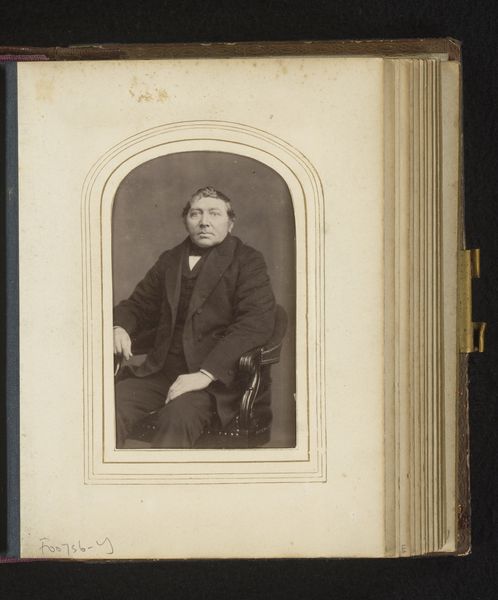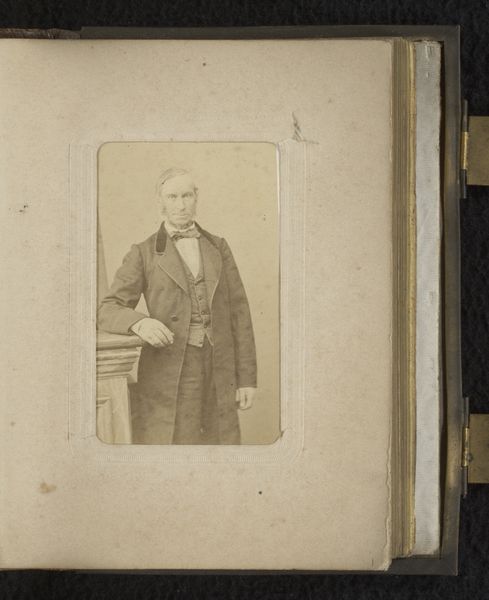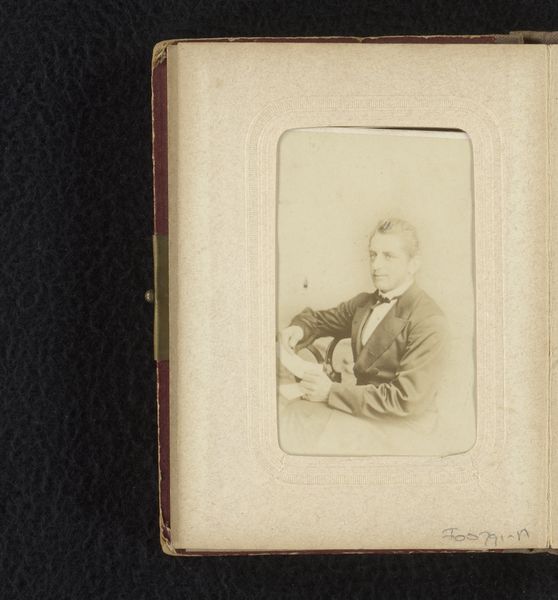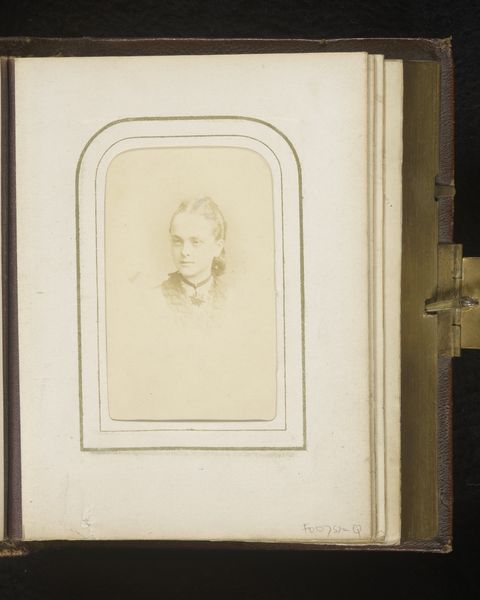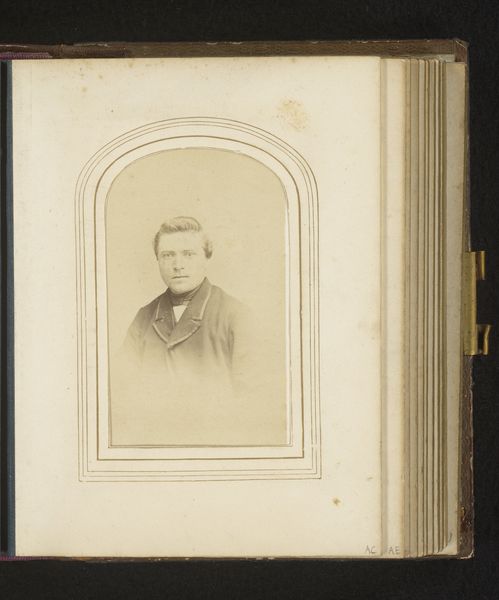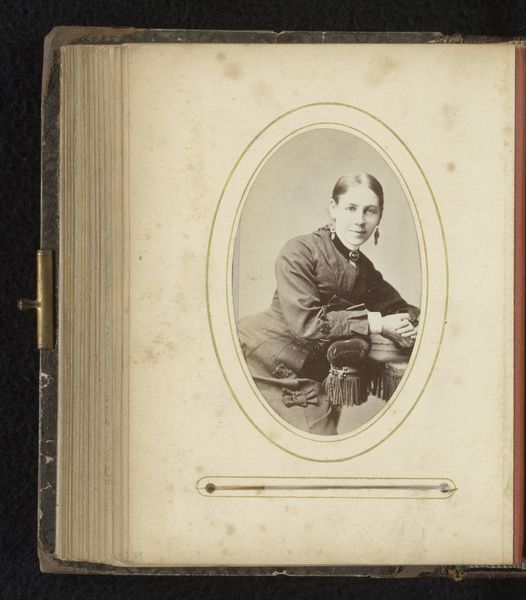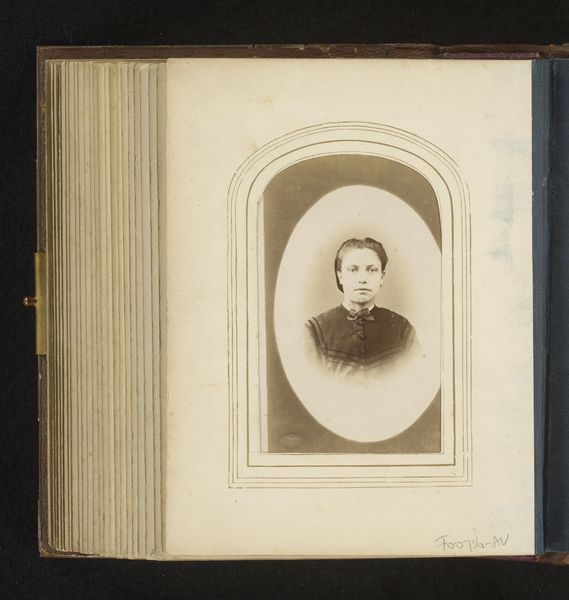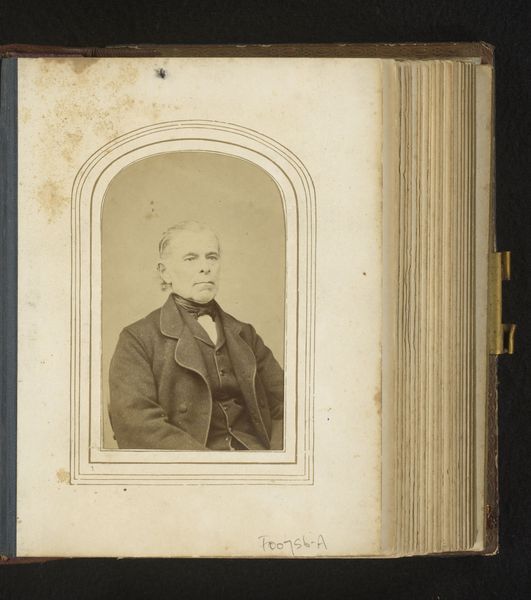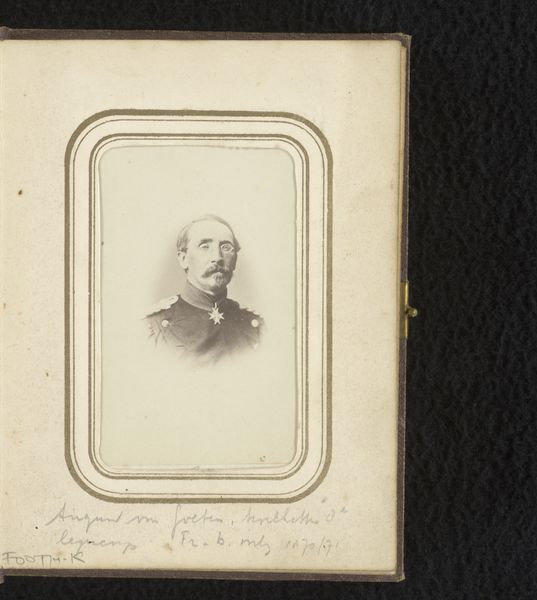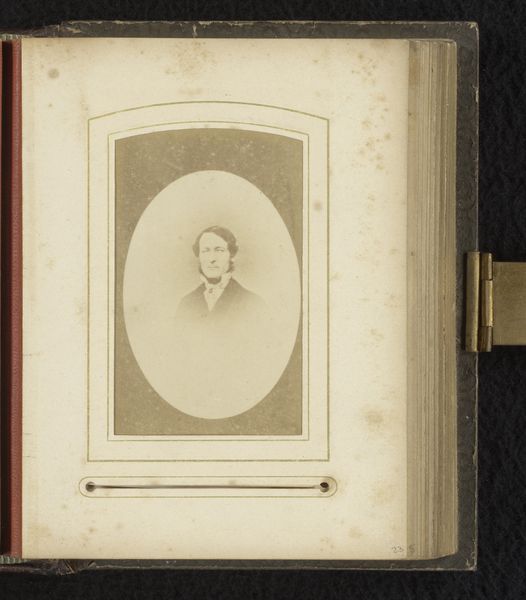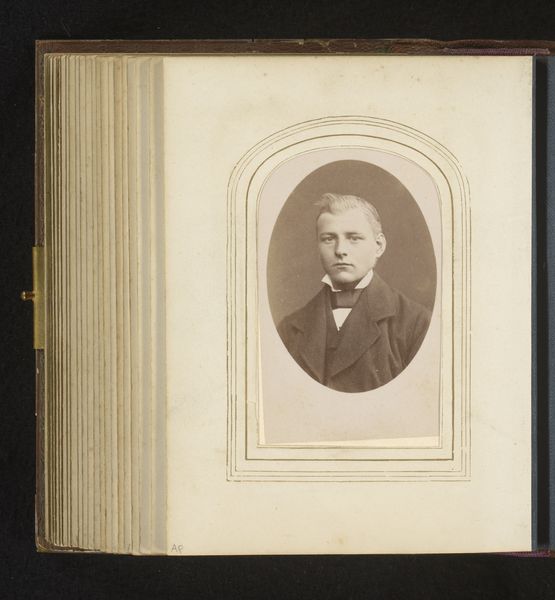
photography, albumen-print
#
portrait
#
photography
#
albumen-print
Dimensions: height 81 mm, width 50 mm
Copyright: Rijks Museum: Open Domain
Curator: Here we have a fascinating albumen print dating between 1864 and 1893 entitled "Portret van een man," which translates to "Portrait of a Man," created by Abraham Koorenhoff. It appears to be part of an old photograph album. Editor: There's such an undeniable stillness to it, isn't there? The monochromatic tones amplify the feeling that we are peering into a preserved moment of an ordinary human. Curator: The albumen print, as a process, certainly lent itself to that stillness. It's an intriguing example of early photographic portraiture from that period, reflecting the evolving accessibility and social impact of photography in the mid-to-late 19th century. Koorenhoff captured something quintessentially Victorian with the individual carefully centered in an oval, perhaps echoing the class dynamics and social aspirations of the rising bourgeoisie. Editor: It's curious, though, that such emphasis would be put on having such austere portrait. I wonder what presenting oneself with minimal ornamentation communicates to the people back then. It feels like there is no attempt to soften his features, it feels oddly modern. Curator: Perhaps it reflects an interesting tension—on the one hand, the desire for accuracy afforded by photography, and on the other hand, a particular performance of masculinity, reflecting a specific socio-cultural identity. We can examine how different class positions affected representation in early portraiture, showing how individuals performed themselves based on gender expectations and available forms of portraiture like albumen prints. Editor: And in that respect, does the man depicted hold privilege or disadvantage in regard to the performance expected of him. What does his age do in context to his gender and status? I can feel many layers upon layers as I try to analyze who exactly this man may have been and what messages he conveys. Curator: Yes, by observing photographic techniques, framing conventions, and poses that characterize each portrait we come closer to that understanding and also expose a rich tapestry of cultural influences, societal dynamics, and historical significance. It leaves much to be unpacked still today, and it's the beauty of preserving moments in photography like this, and analyzing what impact they had back then. Editor: I agree. These are such delicate windows, aren't they? You look at him, and you want to tell his story for him. It urges you to think about who decides these social and cultural expectations, who reinforces them and, on a more micro level, what kind of stories would they like to tell themselves.
Comments
No comments
Be the first to comment and join the conversation on the ultimate creative platform.
